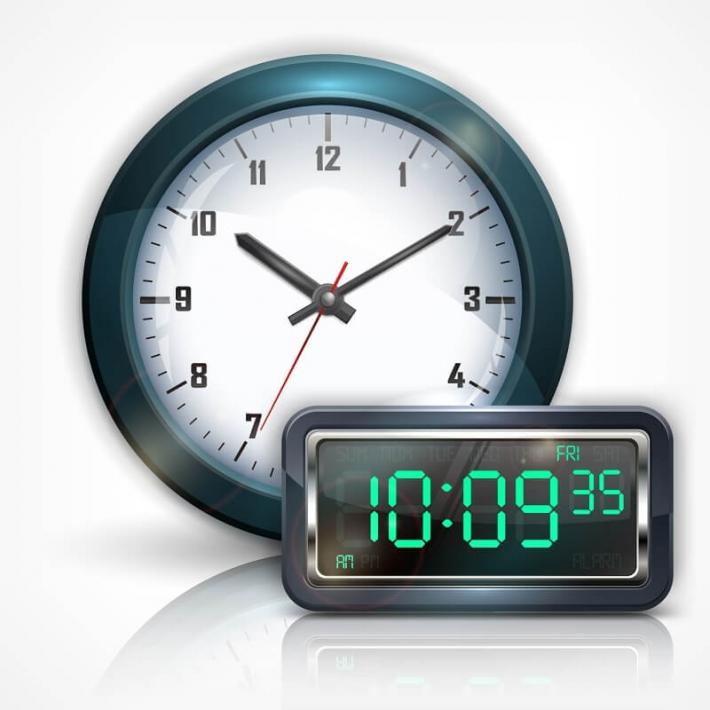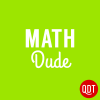What Do Analog and Digital Mean?
What do the terms “analog” and “digital” mean? What are some of the analog and digital things in your life? And what does this have to do with math?
Jason Marshall, PhD

Listen
What Do Analog and Digital Mean?
People like to say that we are living in the “digital age.” But what do they mean by that? My guess is that many of them have no idea … they just think it sounds cool (which it does). But what they really are saying is that we are living in the age of the digital computer.
So it’s worth asking: What makes a computer—or anything else—digital? Is there some alternative to being digital? And what does this all have to do with math and numbers?
Let’s find out.
What Does Analog Mean?
Back in the day, all clocks—both those on the wall and those on people’s wrists—were what you call analog devices. What does that mean? Well, as you probably know, a good old analog clock contains two (or possibly three) “hands” that go around in circles to show you the current hour and minute (and possibly second).
Something that changes continuously … is called an analog quantity.
Each of these hands can point anywhere along the circle. That means that the minute hand can point to every numerical value that exists between 0 and 60. Of course, each of these infinity of values isn’t explicitly marked, but the hand can nonetheless point to all of them. For example, when the minute hand is halfway between the 11 and 12 minute marks (both of which are between the 2 and 3 hour marks), the time must be 11.5 minutes past some hour. Halfway between that point and the 12 minute mark, the time must be 11.75 minutes past some hour. And on and on you can continue to divide up the circle forever.
The key thing to realize is that as each hand moves continuously over a portion of its circular path, it moves through an infinite number of real numbers (“real” as in the set of “real numbers”) that represent the continuous moments of time. Something that changes continuously like this—meaning it moves smoothly from one point to another without any sudden jumps or breaks—is called an analog quantity. And that’s why this type of clock is called an analog clock.
What Does Digital Mean?
But most of the clocks you see these days are not analog. Instead, they’re what we call digital. In a digital clock, hours, minutes, and (possibly) seconds are represented by a discrete number of whole numbers. The hour display shows one of 12 possible values while the minute and second displays show one of 60 possible values.
Analog quantities vary continuously while digital quantities are discretized into one of a number of possibilities.
The key thing here is that, unlike analog clocks, digital clocks cannot explicitly represent each and every one of the infinite number of possible times. Instead, they break time up into chunks and represent each chunk by discrete digits. And thus we say that time on a digital clock is represented as a digital quantity.
So analog quantities vary continuously while digital quantities are discretized into one of a number of possibilities. This number of discrete possibilities can actually be huge—as in a staircase that goes on and on—but there is always some sort of jump from one to the next.
Is Digital Better Than Analog?
I should point out that there’s nothing inherently good or bad about a quantity being analog or digital—they’re just different things. Time is an inherently analog quantity since we don’t (as far as we know) actually jump through time in discrete little steps. So the digital representation of time that we get with a digital clock is sort of an approximation to the true analog time. Again, it’s not better or worse—just different.
When we take a picture with the digital camera on our phone, we’re once again taking an inherently analog thing—our smooth and continuous view of the real world—and digitizing it to turn it into a digital picture. To understand what this means, you have to know that a digital camera stores an image by dividing up its view of the world into a discrete grid of boxes (aka pixels) and assigns numbers to each of them that represent their color and brightness. In so doing, the digital camera takes a discrete number of samples of its analog view of the world to create a digital representation of it.
There are many advantages to representing pictures this way, but that doesn’t mean digital is inherently better than analog in this case either—once again, it’s just different.
Why Are Computers Digital Machines?
Which brings us to computers—the digital machine behind the whole digital age in which we’re living. What makes a digital computer digital? Well, at their hearts (if we can say that computers have hearts), computers are actually rather, shall we say, simple—they are really only capable of working with two things at a time.
In fact, everything a computer does stems from its ability to manipulate and perform simple math with a pair of quantities—usually dubbed 0 and 1. Digital computers cannot directly perform operations on the continuous quantities of the natural world—only on digital approximations to them. Again, this isn’t a good or a bad thing, it’s just a thing. And it’s the thing that makes the digital world in which we’re living digital.
Wrap Up
Until next time, this is Jason Marshall with The Math Dude’s Quick and Dirty Tips to Make Math Easier. Thanks for reading, math fans!
Clocks image from Shutterstock.

